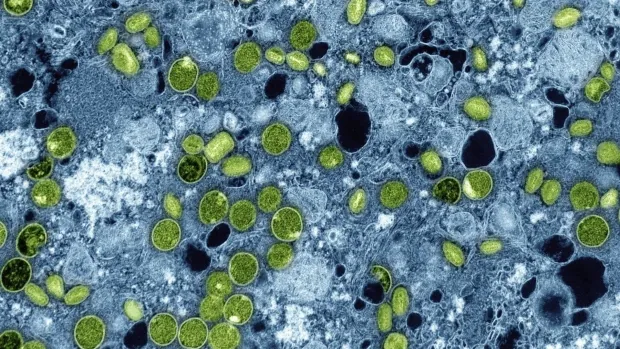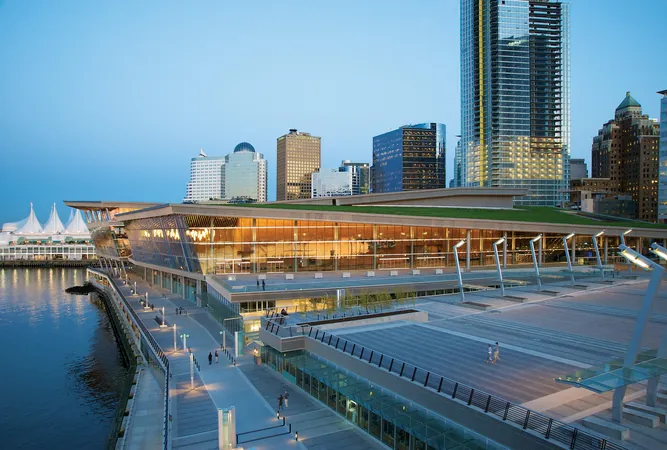
Can We Really Make Mars Habitable? Revolutionary Study Reveals Game-Changing Particles!
2024-11-24
Author: Emily
Can We Really Make Mars Habitable? Revolutionary Study Reveals Game-Changing Particles!
Imagine transforming the Red Planet from a barren wasteland into a vibrant, Earth-like habitat! This audacious goal, known as terraforming, has captivated the imagination of scientists and futurists alike. New research highlights an innovative approach that could finally make this ambitious dream a reality.
Mars's Hidden Past
Extensive geological evidence tells a captivating story: Mars once boasted a thicker atmosphere and a much warmer climate, which allowed rivers and lakes to flourish. The ongoing challenge, however, is how we might reverse this planet’s cold fate and restore its balmy conditions.
The Complex Art of Terraforming
To terraform Mars, we first need to bolster its atmosphere to trap heat and enhance the greenhouse effect. Currently, Mars is frigid, with a significant portion of its carbon dioxide frozen at the poles in the form of ‘dry ice.’ This has sparked various proposals on how to warm the planet—some even suggesting nuclear detonations to liberate trapped gases from the surface.
However, current studies caution that the amount of carbon dioxide stored is insufficient for significant warming. Alternative strategies, including mining fluorine-rich minerals to create potent greenhouse gases, have their own hurdles—namely, fluorine’s scarcity in Martian rocks.
A Breakthrough with Nanoparticles
Enter graduate student Samaneh Ansari from Northwestern University and her groundbreaking team. Their promising solution? The creation of extremely tiny artificial aerosols—nanorods made of particles measuring just 9 micrometers. These minuscule structures could scatter sunlight while simultaneously trapping outgoing infrared wavelengths, acting as a natural greenhouse layer for the planet.
Astoundingly, these nanorods could outperform existing greenhouse gases by over 5,000 times! What's more, they can be synthesized from commonly found elements such as iron or aluminum in Martian soil, minimizing logistical challenges.
Sustaining a Warmer Mars
Model simulations indicate that by introducing these nanorods at a rate of 30 liters (or 8 gallons) per second, the planet’s temperature could rise by an astounding 30°C (54°F)—enough to reintroduce liquid water across vast surface areas during the Martian summer, thus revitalizing the planet.
Though ambitious, this proposal faces practical challenges, including the extensive mining and processing of Martian rock needed to produce the nanorods. The authors of the study caution that their findings are preliminary, and many uncertainties remain to be addressed.
The Road Ahead
The recent research marks a significant leap in our quest to make Mars hospitable for future habitation. While there are many hurdles ahead, Ansari's innovative strategy might just be the beacon of hope that ignites humanity's long-standing dream of colonizing the Red Planet.
So, can we transform Mars into a second Earth? With groundbreaking research like this paving the way, the possibilities are more tantalizing than ever!









 Brasil (PT)
Brasil (PT)
 Canada (EN)
Canada (EN)
 Chile (ES)
Chile (ES)
 España (ES)
España (ES)
 France (FR)
France (FR)
 Hong Kong (EN)
Hong Kong (EN)
 Italia (IT)
Italia (IT)
 日本 (JA)
日本 (JA)
 Magyarország (HU)
Magyarország (HU)
 Norge (NO)
Norge (NO)
 Polska (PL)
Polska (PL)
 Schweiz (DE)
Schweiz (DE)
 Singapore (EN)
Singapore (EN)
 Sverige (SV)
Sverige (SV)
 Suomi (FI)
Suomi (FI)
 Türkiye (TR)
Türkiye (TR)